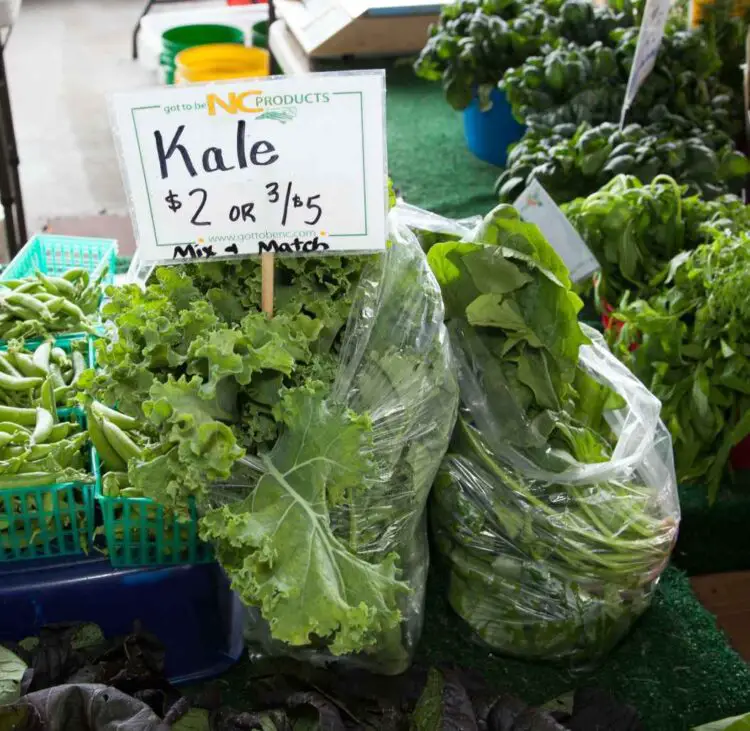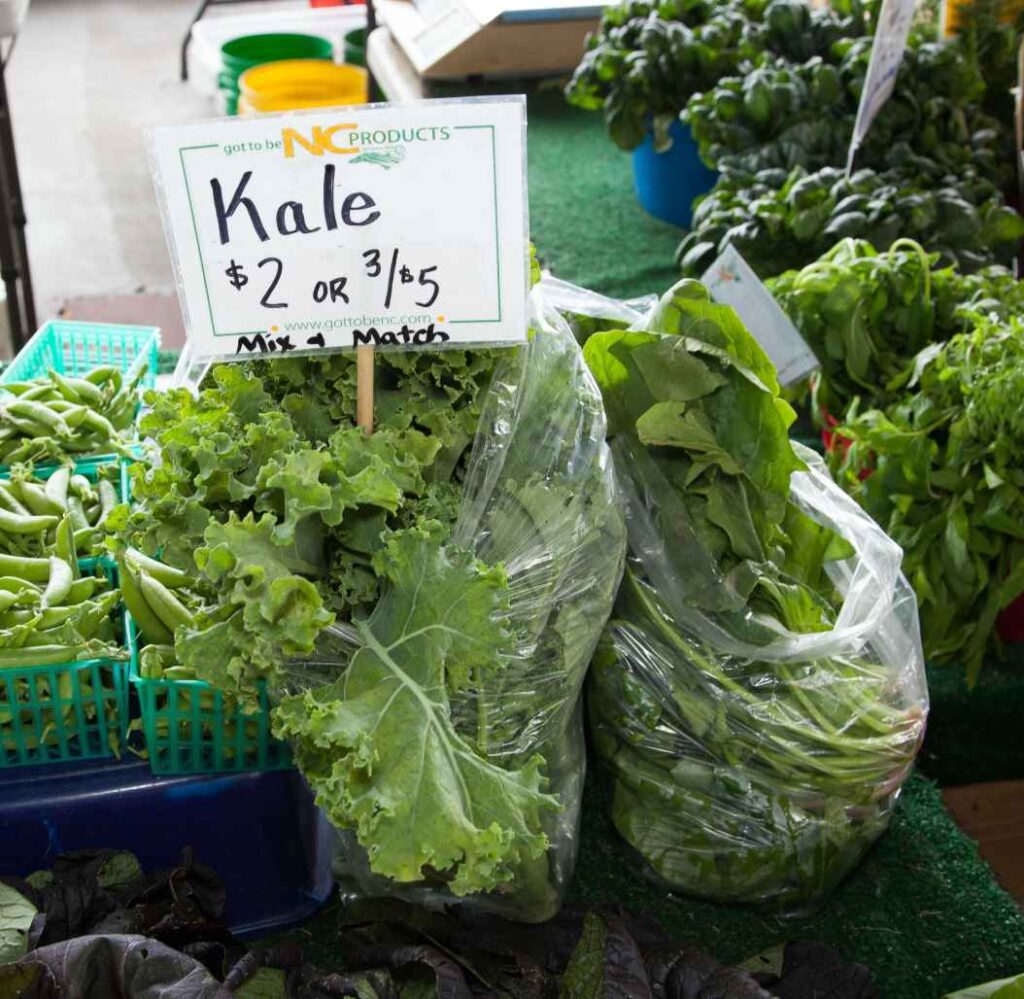
Key Takeaways
After reading this guide, you should feel equipped to start cooking with kale successfully. Here are the key takeaways to remember:
- Properly prep kale by removing tough stems, massaging leaves, and washing thoroughly.
- Use cooking methods like steaming, sautéing, roasting, or braising to soften the texture and mellow bitterness.
- Balance earthy flavor with acids like lemon or vinegar, umami ingredients like Parmesan, and herbs/spices.
- Avoid overcooking. Kale only needs a few minutes to become tender.
- Troubleshoot issues like mushiness, fibrous texture, or lack of flavor.
- Try creative recipes that highlight kale’s versatility as an ingredient.
- Have fun experimenting with different preparation techniques and flavor combinations.
- Approach kale with an open mindset and willingness to try new things.
With the proper handling, kale can transform into a tasty, nutritious ingredient to enjoy. Use these tips and techniques to guide you on your kale cooking journey!
Introduction
Kale’s popularity has skyrocketed in recent years, transforming it from a garnish into a coveted superfood. Cooking with kale has become so popular that the leafy green even has its own holiday. National Kale Day is held on the first day of February each year. So what accounts for the meteoric rise of this vegetable that’s been around for centuries?
Modern science has revealed just how nutritious kale is, with vitamins A, C, and K, a host of antioxidants, and anti-inflammatory compounds. Research continues to uncover ways kale supports heart health, digestion, immune function, and more. Plus, kale’s hearty, ruffled leaves add texture and flavor to dishes.
While raw kale salads and green smoothies abound, cooking unlocks even more possibilities. Different cooking methods like roasting, sautéing, and steaming all bring out new depths of flavor and texture. This ultimate guide will explore how to select, store, prep, and cook kale along with tips for enhancing nutrition. You’ll find techniques for avoiding common pitfalls like bitterness or sogginess. We’ll also share some tempting signature recipes that highlight versatile, nutritious kale.
Whether you’re new to kale or already a convert, cooking with this supergreen can be an adventure. Join us as we discover the many culinary uses for kale. Soon you may find yourself celebrating National Kale Day all year round!
Brief background on kale
Kale is a leafy green vegetable that belongs to the Brassica oleracea species in the cabbage family. Native to the Mediterranean region, kale has been cultivated for food for thousands of years. This hardy green is grown for its ruffled and curly dark blue-green or purple leaves, which have a bitter, earthy flavor. Both the leaves and stem are edible when cooked.
“Don’t throw away those kale stems! They can be sautéed, roasted, or used to make stock.”
Jamie O.
Extremely nutritious, kale is packed with vitamins A, C, and K, calcium, antioxidants, fiber, and a wide range of phytonutrients. Often referred to as a “superfood”, kale has been associated with many health benefits, from supporting heart health and digestion to boosting immunity and fighting inflammation. Its surge in popularity has transformed kale from being used as merely a garnish to becoming a coveted ingredient in salads, smoothies, soups, and other dishes around the world.
Nutritional Benefits of Kale
Kale is one of the most nutrient-dense foods you can eat. Here is an infographic overview of some of kale’s top vitamins, minerals, and antioxidants:
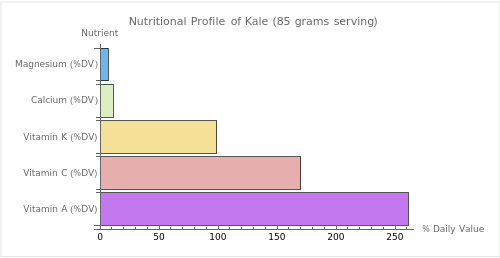
The great news is that many of these nutrients are retained or even enhanced when kale is cooked. Light cooking methods like steaming, sautéing, roasting, and blanching can help make some of kale’s nutrients more bioavailable. For example, the antioxidants lutein and beta-carotene are more absorbable after cooking.
Steaming kale for 3-5 minutes is ideal for retaining nutrients while softening its texture. Roasting kale chips in the oven can boost antioxidant activity as well as create delicious crispy bites. When boiling kale, use minimal water to reduce nutrient loss.
No matter how it’s prepared, kale offers an abundance of nutritional benefits. Now let’s look at how to select, store, and prep fresh kale to enjoy all of its healthy goodness.
“Kale gets bitter when it gets too hot. You want to cook it just until it turns bright green and tender.”
Ina G
Preparing Kale
Properly preparing kale is key to enjoying its full flavor and texture. Here are some tips:
Washing Kale
- Rinse leaves thoroughly under running water to remove any dirt or grit.
- Agitate the leaves with your hands to dislodge debris.
- Dry the leaves well after washing, either with a salad spinner or by patting them dry with paper towels.
Removing Stems
- Hold the base of the leaf in one hand. Use the other hand to strip the leaf off the thick stem.
- For curly kale varieties, run your hand down the stem to strip off the leaves.
- For lacinato and dinosaur kale, cut out the thick stems with a knife.
Massaging Kale
- After washing and stemming, massage the leaves for 2-3 minutes.
- This helps break down fiber and tenderize the leaves.
- Add a drizzle of olive oil or lemon juice to help soften as you massage.
Cooking Kale
- Steaming for 5 minutes helps reduce bitterness and soften leaves.
- Sautéing or stir-frying on high heat also helps mellow flavor.
- Roasting at 400°F transforms kale into crispy chips.
- Add raw kale to smoothies, soups, and stews at the end to retain nutrients.
Properly preparing kale helps remove any unpleasant textures while unlocking its best flavors. Now let’s look at how to cook kale using different techniques

How to Select and Store Kale
Choosing fresh, robust kale is important to get the best flavor and texture. Here are some tips for selecting kale:
- Look for crisp, deeply colored leaves without signs of wilting, yellowing, or browning.
- Avoid kale with slimy, mushy leaves.
- For curly kale, choose bunches with small- to medium-sized leaves. Large leaves can be overly tough and fibrous.
- For dinosaur/lacinato kale, choose bunches with uniform, unwrinkled leaves.
- Smaller kale bunches are often more tender and mild in flavor.
Once you get your kale home:
- Rinse and dry the leaves before storing.
- Remove any damaged leaves and trim the ends of the stems.
Kale can be stored in the refrigerator, freezer, or at room temperature for short periods. Here is a comparison of the best storage methods:
| Storage Method | How To | Length of Time |
|---|---|---|
| Refrigerator | Store unwashed leaves loose in a perforated plastic bag in the crisper drawer. | 3-5 days |
| Freezer | Blanch leaves for 1-2 minutes, dry thoroughly, then freeze in airtight bags. | 6-8 months |
| Counter | Place trimmed, unwashed kale in a cup of water at room temp, out of direct sunlight. | 2-3 days |
Proper storage keeps kale fresh and nutritious. Now let’s look at how to wash and prep kale for cooking.
Cooking Techniques for Kale
There are many great ways to cook kale to bring out its best flavors and textures.
Boiling and Steaming
- Boil chopped kale for 5-8 minutes until tender. This works well for soups, stews, and side dishes.
- Steam over boiling water for 5 minutes. Steaming gives a bright green color and retains more nutrients. It’s great for salads or sides.
Sautéing and Stir-Frying
- Cook chopped kale over high heat for 2-3 minutes, stirring frequently. Add olive oil or broth to prevent sticking.
- Sautéing gives kale a deep green color and mellow, lightly caramelized flavor. It’s perfect for pastas, eggs, or rice bowls.
Roasting and Baking
- Toss torn kale with oil and seasonings and roast at 400°F for 15-20 minutes for crispy kale chips.
- Mix chopped kale into casseroles or baked dishes like quiche, egg bake, or ziti. The kale becomes tender during baking.
Blanching
- Boil kale for 1 minute, then shock in ice water. Blanching sets the color and softens kale to use in soups, casseroles, pasta, or freeze for later.
Slow Cooking
- Add chopped kale to soups, stews, and braises during the last 30 minutes of cooking time so it doesn’t get mushy.
- Braise chopped kale and onions in broth with garlic and red pepper flakes for a flavorful side.
The options for cooking kale are endless – be creative and find your favorite preparation methods!
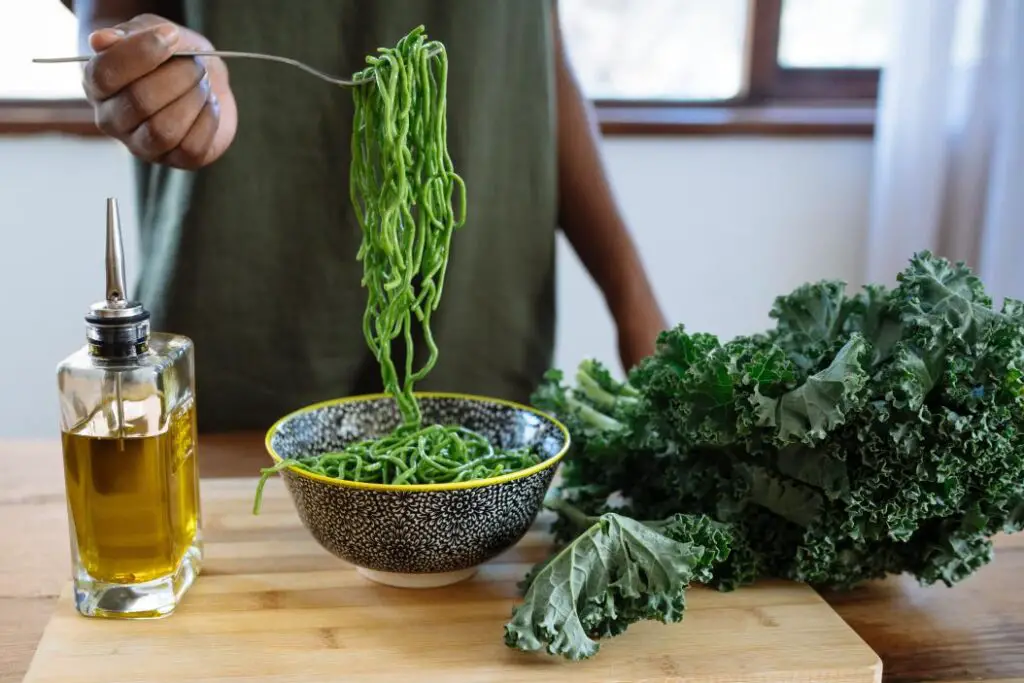
Seasonings and Flavor Pairings for Kale
Kale can be a polarizing ingredient, with its assertive bitter and earthy notes. But when paired with the right seasonings and ingredients, kale transforms into a versatile canvas for all kinds of delicious flavors.
Finding complementary herbs, spices, oils, acids, and more can help mellow kale’s pungent taste and bring out new depths of flavor. You can make raw kale salads zing with lemon juice and tahini. Roasting kale calms its bitterness and allows garlic, paprika, and olive oil to shine. Sautéed kale gets a tangy sweetness from balsamic vinegar and onions.
This section will explore the wide world of seasonings and flavor combinations that go hand-in-hand with kale. We’ll look at ways to use common herbs, spices, acids, fats, and creative ingredient pairings to enhance kale’s flavor profile. With the right supporting flavors, kale’s earthiness can be brought into balance and its nutrient density can be enjoyed without the strong bitter taste turning people off.
Let’s look at some of the top herbs, spices, oils, acids, and flavor combos that complement and enhance kale’s unique flavor. Finding your perfect seasoning blend can make kale much tastier and more enjoyable.
“A little olive oil and lemon juice work magic on kale, massaging and softening the leaves while making them shine.”
Martha S.
Herbs and Spices
Fresh or dried herbs and spices add layers of flavor and aroma to kale dishes. As the video references demonstrate, herbs like oregano, thyme, and rosemary complement kale’s earthy essence. Spices like garlic and paprika also enhance umami.
- Garlic – sautéed or roasted with kale
- Red pepper flakes – add heat and zing
- Smoked paprika – enhances the umami flavor
- Oregano, thyme, rosemary – robust Mediterranean herbs
Acids
Acids like lemon juice, vinegar, and mustard add brightness that balances out kale’s bitter notes. The tanginess helps cut through the earthy flavor to make it more palatable. Acids also add another layer of interest.
- Lemon – brightens flavor, cuts bitterness
- Vinegar – balsamic, red wine, sherry add tang
- Mustard – spicy kick and acidity
Oils and Fats
Adding fats like olive oil, butter, or tahini when cooking kale enhances richness and texture. The video references compare different oils and fats, noting their impacts on flavor. Using healthy fats brings out kale’s savory qualities.
- Olive oil – toss with kale before roasting
- Butter or ghee – sauté kale for richness
- Tahini – makes creamy dressings for raw kale
Flavor Combos
Certain ingredients just pair perfectly with kale to create delicious flavor combos. As the video references show, classics like kale Caesar salad with lemon and Parmesan or massaged kale salads with tahini dressing allow the ingredients to mingle in harmony. Don’t be afraid to get creative with unexpected flavors too!
- Kale Caesar salad with lemon, Parmesan, garlic
- Massaged kale salad with tahini dressing
- Sautéed kale and onions with balsamic vinegar
- Roasted kale chips seasoned with paprika and garlic
Experiment with different seasonings and ingredients to enhance kale’s flavor. Acidic, aromatic, and umami flavors balance out kale’s bitterness. Play around to find your perfect kale flavor pairings.
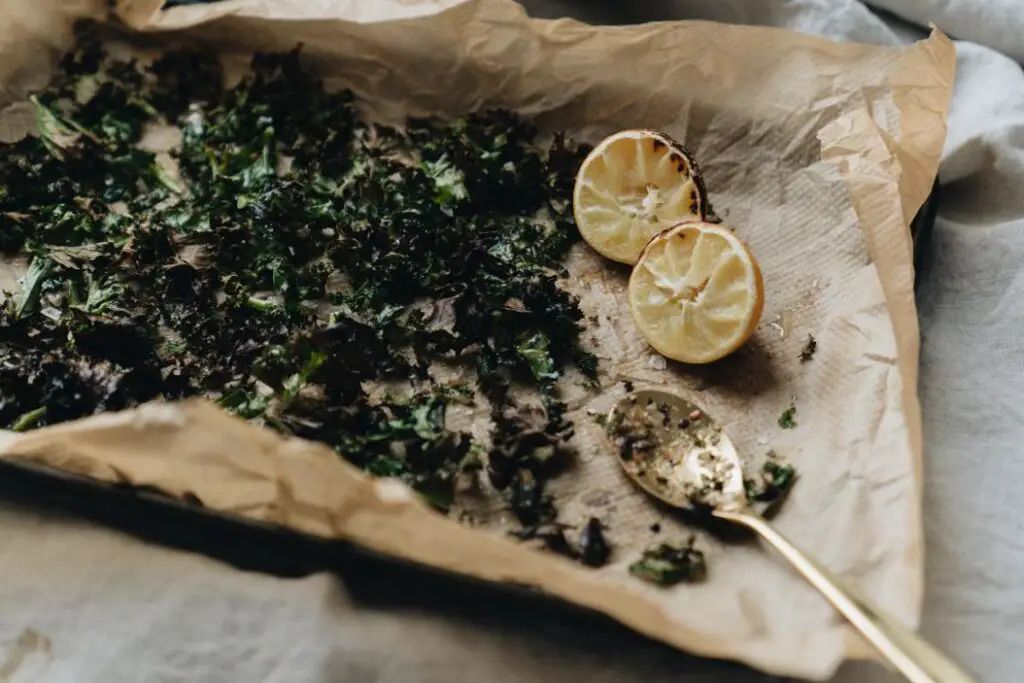
Signature Kale Recipes that show off cooking techniques
Kale’s surge in popularity has inspired both home cooks and professional chefs to find creative ways to use this leafy green. While raw kale salads and green smoothies are ubiquitous, cooking unlocks even more possibilities for enjoying kale. There are endless options for transforming kale into crave-worthy dishes across all courses – from breakfast to dessert!
In this section, we’ll highlight 10 signature kale recipes that showcase how to deliciously feature kale as the star ingredient. These popular dishes run the gamut from healthy snacks to main courses to fun desserts. We’ll discuss why each recipe works so well, along with tips and tricks for preparation.
Kale’s assertive texture and earthy essence make it perfectly suited for both traditional and unexpected pairings. When handled properly, kale can be tamed into a tender and palatable form. The recipes shared here will open your eyes to the many versatile ways kale can be prepared while delivering a big nutritional punch.
| Recipe | Why It’s Popular | Why It Works |
|---|---|---|
| Massaged Kale Salad | Healthy, easy side salad | Massaging softens kale’s texture |
| Kale Pesto | Unique twist on traditional pesto | Kale stands up to bold garlic and Parmesan |
| Kale Chips | Crispy, addictive snack | Roasting mellows kale’s bitterness |
| Kale Caesar Salad | Putting a healthy spin on a classic | Tangy dressing softens and coats kale |
| Sautéed Kale and Chickpeas | Hearty vegetarian main dish | Sautéing gives kale a toasty crunch |
| Kale and Quinoa Bowl | Nutrient-packed meal prep staple | Quinoa and kale pack protein and vitamins |
| Curried Kale Soup | Cozy, comforting, and healthy | Slow simmering softens kale’s texture |
| Kale Smoothie | An easy way to eat more greens | Blending raw kale into smoothies boosts nutrition |
| Baked Eggs with Kale | Fun brunch dish | Cooking eggs in a kale nest adds color and nutrition |
| Kale Enchiladas | Family-friendly green meal | Baked kale softens and adds nutrients |
Kale’s nutrient density makes it a star ingredient to add nutrition, texture, and earthy flavor to many recipes. These signature kale dishes highlight its versatility.
Troubleshooting Cooking Challenges with Kale
Kale’s growing popularity is due in large part to its stellar nutritional profile, but many people struggle to enjoy kale because of its assertive flavor and fibrous texture. Without proper preparation and cooking, kale can end up intensely bitter, unpleasantly tough, or lacking in flavor. However, with a few simple tricks and techniques, it’s easy to avoid the common cooking pitfalls and bring out kale’s best qualities.
In this section, we’ll tackle several of the main cooking challenges that can arise when working with kale and provide fixes to help you end up with tender greens and balanced flavor. You’ll learn how to mellow bitterness, soften tough leaves, add flavor, and prevent sogginess or mushiness.
Understanding how easy it is to adjust preparation and cooking methods to achieve your desired texture and taste can give you the confidence to continue cooking with kale. Small tweaks like massaging raw kale, removing stems, adding acidity, monitoring cooking times, and boosting flavor can make all the difference.
With the troubleshooting tips provided here, you’ll be ready to handle any potential issues that arise when cooking with kale. We’ll explore simple solutions for balancing flavor, softening texture, and preventing overcooking. Let’s turn this powerful superfood into a tasty ingredient you can enjoy in many dishes!
Bitter, Earthy Flavor
- Add acid like lemon juice or vinegar to balance
- Sauté or roast at high heat to mellow bitterness
- Balance with something creamy or sweet like tahini or apples
- Massage raw kale salads to break down fiber
Tough, Fibrous Texture
- Remove thick stems and ribs before cooking
- Massage raw kale leaves to soften cell walls
- Cook kale thoroughly by sautéing, steaming, or braising over heat
- Add moisture when cooking to help soften leaves
Mushy, Soggy Kale
- Avoid overcooking – kale only needs a few minutes
- When braising or simmering, add kale at the end
- For sturdier texture, blanch then add to dishes later
- Roast or sauté on high heat to get crispy edges
Not Enough Flavor
- Boost flavor with bold acids, spices, herbs, oils, and seasonings
- Brown or char kale for deeper, toasted notes
- Pair kale with ingredients like garlic, citrus, or Parmesan
With a few simple fixes, you can troubleshoot any issues that arise when cooking kale. Adjusting preparation methods, cooking times, and flavor combinations can help highlight kale’s best qualities.
Bringing It All Together
Throughout this guide, we’ve explored many different aspects of working with kale. Proper preparation and cooking techniques can help bring out kale’s best qualities and avoid common pitfalls. With the right handling, kale transforms from bitter and tough into a more tender and versatile ingredient.
The key is taking the time to remove stems, massage leaves, and balance flavors. Small tweaks make a big difference. Don’t be afraid to experiment with different cooking methods and ingredient pairings. Roasting, sautéing, braising in broth, adding spices, acids, or oils – the options are endless. Use the techniques shared here as a starting point and let your creativity take over.
Cooking with kale unlocks its full potential. This hearty green can be enjoyed in endless recipes, from breakfast scrambles to snacks, salads, main dishes, and more. With an open mind and a willingness to try new things, anyone can learn to love kale. Let this guide give you knowledge and inspiration to play with kale in your own kitchen.

